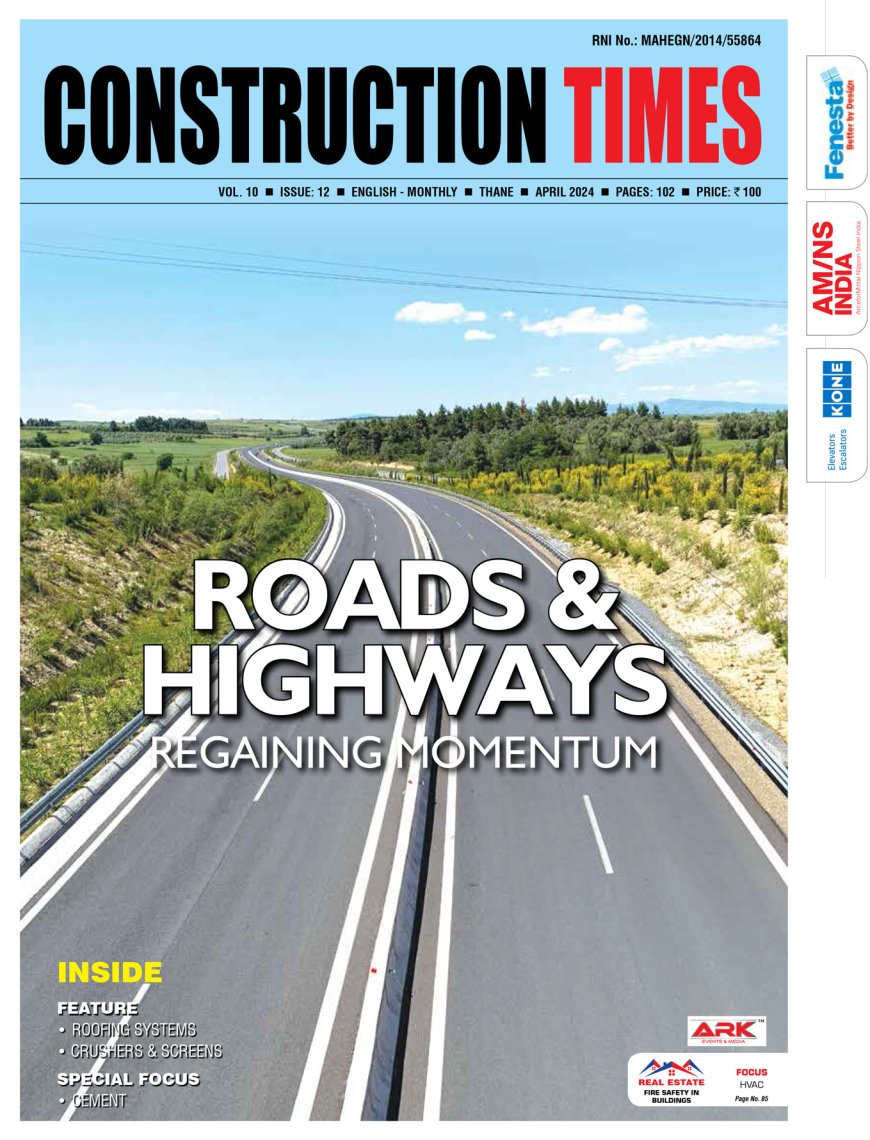Infrastructure Sector after Lockdown - Growth Opportunities & Challenges.
The current situation necessitates deep structural solutions as India prepares for the 'new normal' says Pranav Koshal, Founder Bulls-i Consulting. India was already in the throes of a slowdown when the Covid-19 pandemic struck, and now the infrastructure faces a period of significant disruption. Several rounds of 'economic packages' to aid businesses and workers have

The current situation necessitates deep structural solutions as India prepares for the 'new normal' says Pranav Koshal, Founder Bulls-i Consulting.
India was already in the throes of a slowdown when the Covid-19 pandemic struck, and now the infrastructure faces a period of significant disruption. Several rounds of 'economic packages' to aid businesses and workers have been announced to help ameliorate the economic fallout of Covid -19. The situation necessitates deep structural solutions as India prepares for the 'new normal' with every stakeholder, from the government to promoters, corporates and bankers, to take action to adapt to their new reality.
The infrastructure sector, which was already buckling under immense stress, has been among the worst hit; due to wrong policies and stringent banking regulations. The dramatic fall in demand across most infrastructure segments has further compounded the sector's woes. We need to consider both temporary challenges to long-term repercussions which will shape a new post-Covid reality for companies. The main government bodies driving these infra projects are MoHUA, MoRTH, NHAI, NHIDCL, NBCC, CPWD, GAIL, NTPC, port authorities and other oil companies. They need to finish the tendering process as fast as possible, where all the clearances are available. Also there is a need to speed up the existing projects.
The fiscal situation in the construction sector is already worsening and continued funding of infrastructure capital expenditure (Capex) will be a challenge in the near future. This may further stress the government's ability to spend on the infrastructure over the next one or two years, further dampening the construction and the infrastructure segment.
The current situation has also led to significant volatility in asset prices, especially for financial assets including publicly traded debt and equity. This, in turn, has had a mark-to-market impact requiring investors, such as global funds, to review the health of their portfolios. Falling asset and commodity prices (oil falling to USD25 per bbl) have directly impacted portfolios, which have also taken an indirect hit from investee companies. As a result, this situation will lead to re-pricing of financial assets and churning of fund portfolios, while generating new investment opportunities, as demand for alternative capital picks up and need-based M&A (disposal of non-core assets) gains momentum.
Since infrastructure is a huge human resource and migrant labour-oriented industry, it will take at least six months for it to gain momentum from the date of ending the lockdown. According to me, rethink is needed to resolve the slowing down \ halting of infrastructure projects due to labourers movement or exodus to their hometowns. So on the next day of lifting the lockdown itself, the switch on the production cannot be started. In future, these disruptions can be resolved by the involvement of complete villages in infrastructural projects with integration of total villages.
The government, along with the central bank, has already been working on multiple fronts like loan deferment and interest moratoriums represent a good start. The following actions might help inject impetus into the economic recovery:
- Infrastructure concessions would need 'commercial breathers' embedded into them depending upon the impact on each segment
- Bold reforms across the value chain starting with approvals, clearances, land, labour reforms to attract investment as India emerges as an alternative manufacturing base.
- Tax Free Bonds' could help raise additional resources, fast-track monetisation of operating assets across the infrastructure sector to raise required resources.
The entire restructuring framework must be practical and facilitative to avoid multiple companies becoming NPAs and / or hitting bankruptcy. Banks and NBFCs will need to review their portfolios, conduct diagnostics and work out 'relief packages' for the badly hit industries from the infrastructural sector besides supporting businesses that are backed by strong management.
Promoters / corporate will need to reassess their business strategies to adjust to the post- Covid scenario and assess short-term liquidity including cash balances to meet operational payments as potentially lower earnings are expected. Deferral of non-essential capex; and need to diversify funding sources, closely evaluating cost structures to cut down excess spend, and explore potential disposals of non-core assets to optimise carrying costs and make balance sheets lean.
In conclusion, once the projects resume post lockdown, it is important not just to navigate the recovery phase well, but also to ingrain resilience into all systems and processes, to confront similar disruptions better in future. The global nature of the pandemic, coupled with its high intensity and long duration, will fundamentally alter the business landscape to impact stakeholders, including banks, financial institutions, investors and corporates. The need of the hour is to put in place a comprehensive action plan that addresses potential impact, from short-term cash flow concerns to longer term balance sheet adjustments.

Hits: 232







